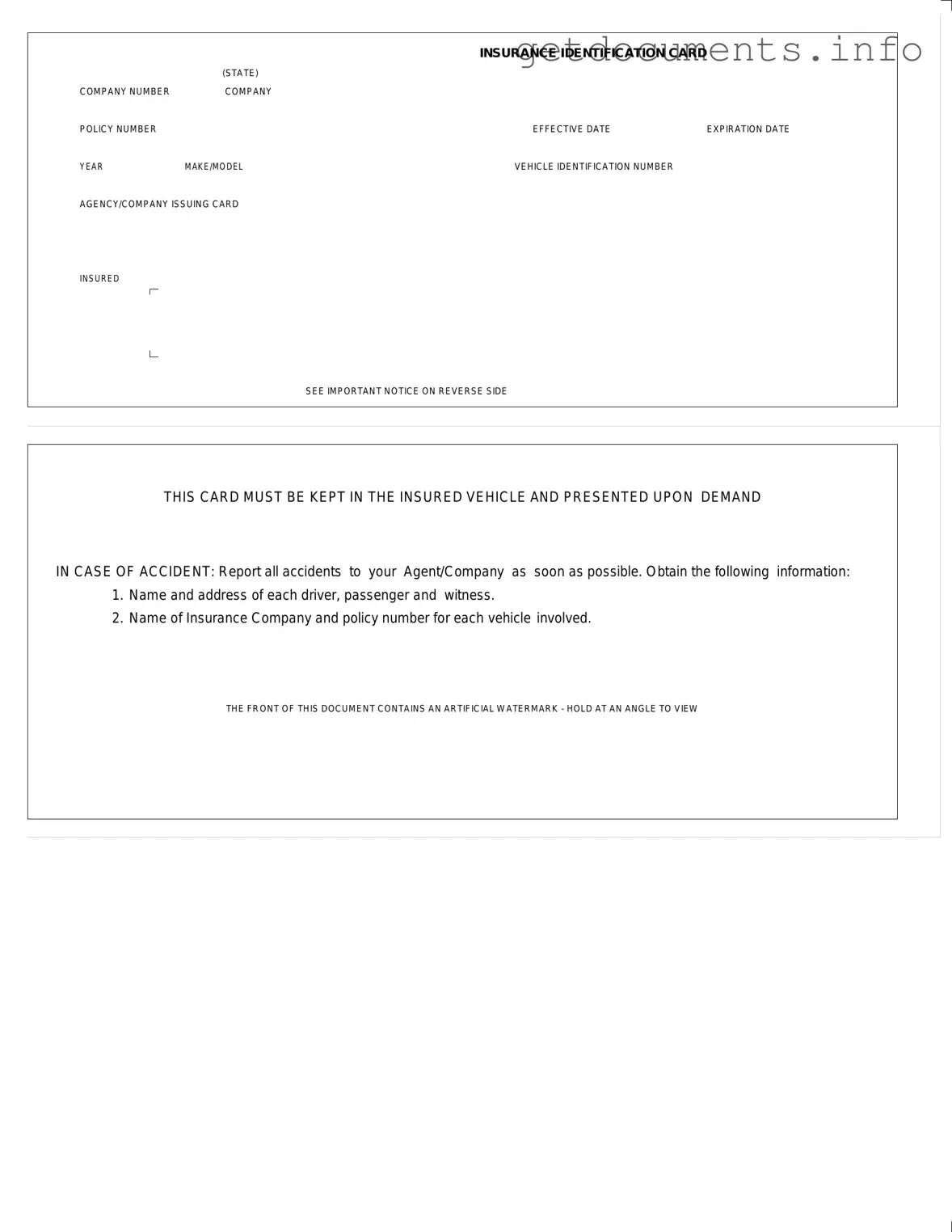When navigating the complexities of auto insurance, the Auto Insurance Card serves as a crucial document for drivers across the United States. This card, issued by your insurance company, contains essential information including the company number, policy number, and the effective and expiration dates of your coverage. It also specifies the year, make, and model of your vehicle, along with the Vehicle Identification Number (VIN). The issuing agency or company is prominently displayed, ensuring that you know whom to contact in case of an incident. Importantly, this card must be kept in the insured vehicle at all times and presented upon demand, especially in the event of an accident. In such situations, it is vital to report all accidents to your insurance agent or company promptly. Collecting pertinent details, such as the names and addresses of drivers, passengers, and witnesses, as well as the insurance information of all vehicles involved, is essential for a smooth claims process. Additionally, a subtle artificial watermark on the front of the document can be viewed by holding it at an angle, serving as a security feature to prevent fraud. Understanding these elements can empower you to handle unforeseen circumstances with confidence.
